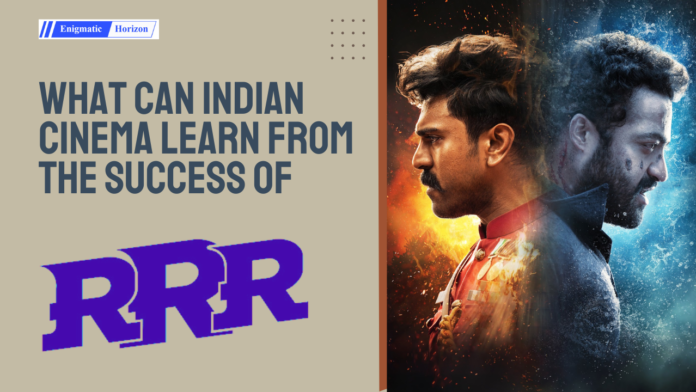Priyal Dholakia
With over 2,000 films released each year, India has the largest film industry in the world. But only a few of these films find critical acclaim and achieve worldwide success.
A lot of this has to do with the kind of content that today’s movies, particularly those from Bollywood, are promoting. Instead of reflecting on our culture, filmmakers can be seen clinging to Western concepts. Cinema can serve as a powerful medium to promote cultural values in society. Instead, Indian films distract the youth and cause them to lose sight of what is important to them. The youth therefore gets trapped in the coil, and thus we see our values and our culture fading away from society.
RRR’s recent success exemplifies the spirit of Indian culture. Its success attests to the fact that Indian culture has the potential to conquer the world. Even the global audience values authentic stories that preserve our culture. The Indian film industry, particularly Bollywood, has a lot to learn from it. Rather than copying Western content, we need to rediscover our cultural roots.
But before we discuss that, let’s first see how cinema and theater have their roots in our Vedic tradition.
How has Vedic tradition given rise to cinema?
Since the Vedic era, India has been the cradle of stories. In fact, the performing arts, particularly drama and theatre, originated in India. Lord Shiva is the one who bestowed the “Natyashastra,” or art of theatre. It is the oldest living treatise on the art of performance. Bharat Muni, an Indian sage, began compiling the Natya Shastra as early as the second century BC. Its principles and techniques are being used in Indian theatre and cinema even today.
What does the success of RRR teach us?
RRR’s success highlights how audiences from all the world appreciate content based on our culture. The film glorified the beauty of Indian culture on the big screen. The film-makers carved a beautiful story of two friends by including elements from our traditional heritage. The theme and depiction resonated with people on so many levels. The film not only earned box office success but also gained worldwide recognition.
It also shows that promoting Indian culture does not imply adhering to outdated practices. A cultural theme can get conveyed by using modern methods. The film made use of cutting-edge and modern VFX support, as well as motion animations. But it retained the core theme and ethos of Indian culture.
The success of RRR should serve as a wake-up call to other filmmakers to stay true to their Indian roots. Indian cinema should celebrate our cultural glories and greatness.
How do other film industries celebrate, preserve, and value their culture?
When we take a look at other film industries, we get to see their cultural spirit. For example, Japanese anime honors their culture at a deep level. Studio Ghibli is a Japanese animation film studio known for creating anime films. The films contain strong themes of respect for nature, family, and community. They celebrate traditional Japanese culture. The film “My Neighbor Totoro” is also a great example of this. It depicts the beauty of rural Japan while also celebrating family bonds.
Indian filmmakers should make an effort to tell stories that showcase our culture. More importantly, filmmakers must step forward to make culture-centric films the new norm of cinema. Audiences should take an active role in promoting such films. They should use social media to generate interest in films that reflect our culture. Value-driven and culture-centric cinema is the call of the hour.
“>”>”>”>
